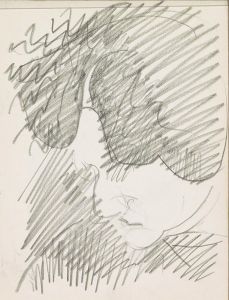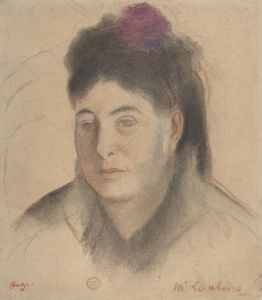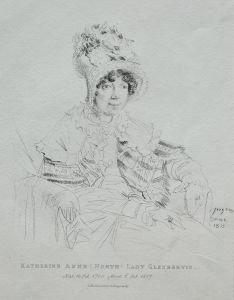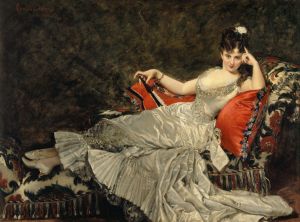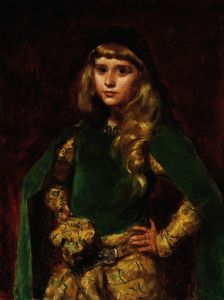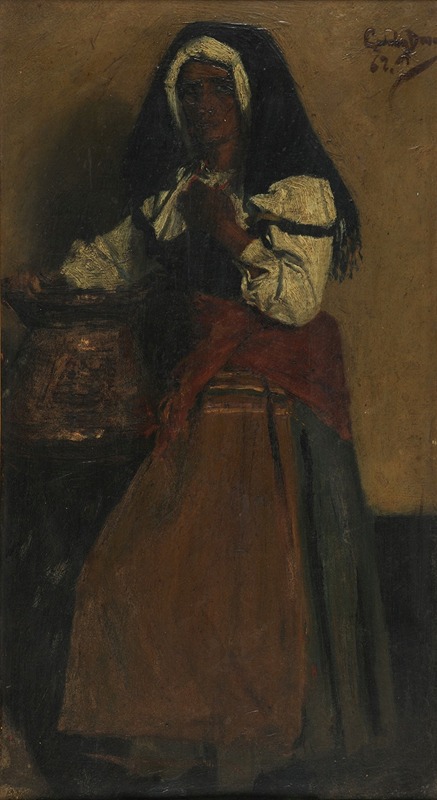
Femme napolitaine
A hand-painted replica of Carolus-Duran’s masterpiece Femme napolitaine, meticulously crafted by professional artists to capture the true essence of the original. Each piece is created with museum-quality canvas and rare mineral pigments, carefully painted by experienced artists with delicate brushstrokes and rich, layered colors to perfectly recreate the texture of the original artwork. Unlike machine-printed reproductions, this hand-painted version brings the painting to life, infused with the artist’s emotions and skill in every stroke. Whether for personal collection or home decoration, it instantly elevates the artistic atmosphere of any space.
Femme napolitaine is a painting by the French artist Charles Auguste Émile Durand, more commonly known as Carolus-Duran. Born on July 4, 1837, in Lille, France, Carolus-Duran was a prominent portraitist of the late 19th century, renowned for his elegant and realistic style. He was a pivotal figure in the art world of his time, both as a painter and as a teacher, influencing a generation of artists, including the famous American portraitist John Singer Sargent.
The painting Femme napolitaine, which translates to "Neapolitan Woman," is one of Carolus-Duran's notable works. It exemplifies his skill in capturing the essence and character of his subjects with a vivid realism that was characteristic of his portraits. The painting depicts a woman from Naples, Italy, and is a testament to Carolus-Duran's interest in diverse cultural representations and his ability to convey the unique attributes of his subjects.
Carolus-Duran's technique was heavily influenced by the Spanish master Diego Velázquez, whose work he studied during his travels in Spain. This influence is evident in Femme napolitaine through the use of loose brushwork and a focus on the play of light and shadow, which adds depth and vitality to the painting. The artist's ability to render textures and fabrics with precision is also notable, contributing to the lifelike quality of the portrait.
The subject of Femme napolitaine is portrayed with a sense of dignity and poise, reflecting Carolus-Duran's approach to portraiture, which often emphasized the individuality and inner life of his sitters. The painting captures the traditional attire and cultural identity of a Neapolitan woman, offering viewers a glimpse into the regional characteristics of 19th-century Italy. This cultural representation aligns with the broader 19th-century European interest in exoticism and the depiction of people from various ethnic backgrounds.
Carolus-Duran's work, including Femme napolitaine, was well-received during his lifetime, and he exhibited regularly at the Paris Salon, the official art exhibition of the Académie des Beaux-Arts in Paris. His reputation as a leading portraitist was solidified by his ability to combine technical skill with a keen psychological insight into his subjects.
In addition to his artistic achievements, Carolus-Duran was a respected teacher. He founded an atelier in Paris, where he taught many students who would go on to have successful careers in art. His teaching emphasized the importance of direct observation and the study of light and color, principles that are evident in his own work.
Femme napolitaine remains an important piece within Carolus-Duran's oeuvre, showcasing his mastery of portraiture and his interest in cultural diversity. The painting continues to be appreciated for its artistic merit and its contribution to the understanding of 19th-century European art.





